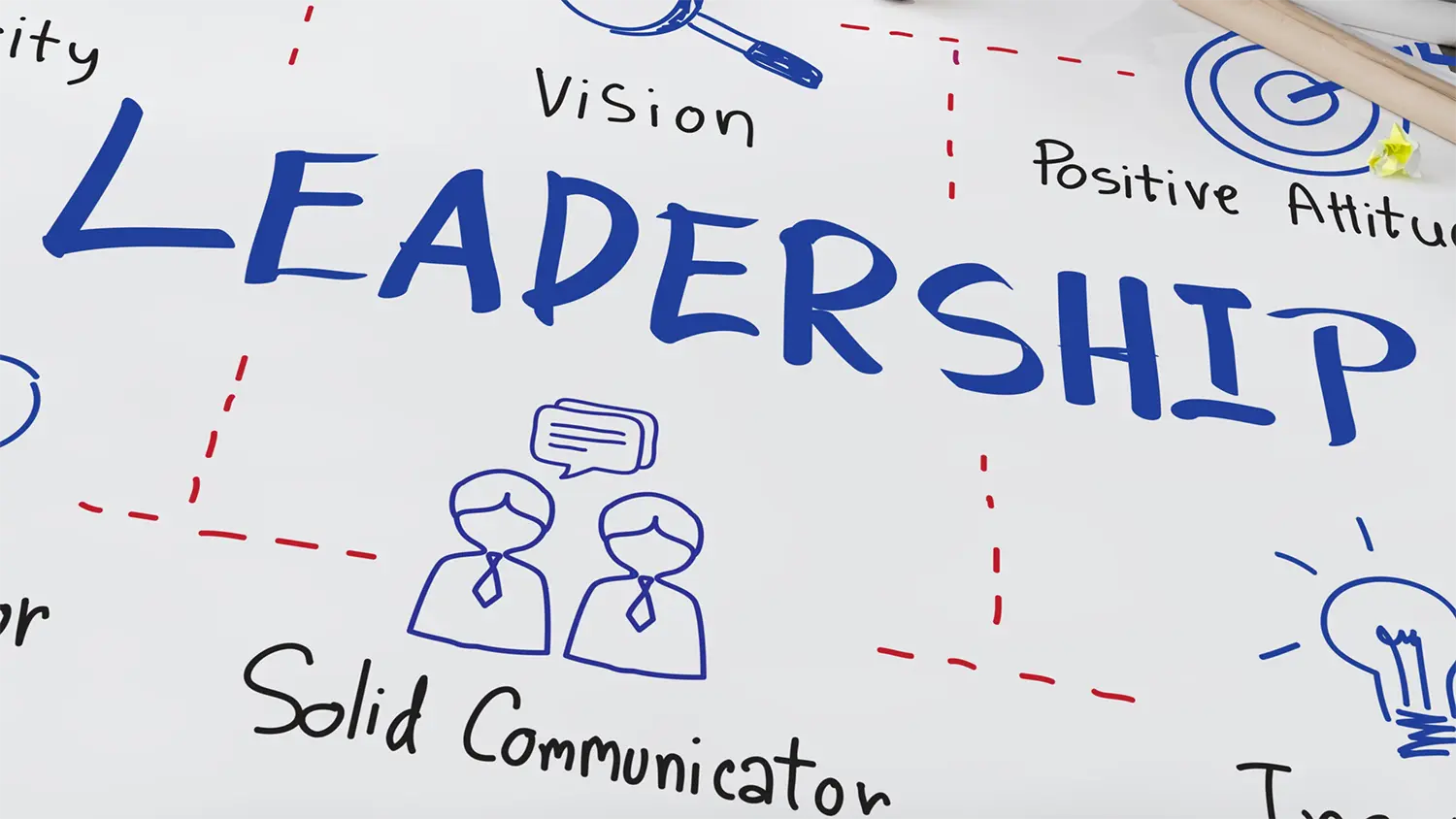Silos in Organizations: Navigating Inevitability, Benefits, and Challenges
Organizational silos, a product of natural growth and specialization, embody a complex balance between fostering expertise and the risk of creating insulated departments. This balance is critical for leaders to manage, harnessing the benefits of silos while mitigating their challenges.
Inevitable Silos from Growth and Organizational Complexity
As organizations expand, their structures evolve to manage the increasing complexity of their operations. This evolution often necessitates the formation of specialized departments or units, concentrating on distinct business aspects. This structural specialization streamlines operations, enhances efficiency, and allows for focused attention on specific areas, driving operational excellence.
Inevitable Silos from Specialization as a Necessity
The move towards specialization is driven by the need for efficiency and effectiveness in handling complex, multifaceted tasks. Businesses allocate resources and expertise where they are most beneficial by dividing the organization into smaller, focused units. However, this division, while optimizing operational efficiency, inadvertently leads to the creation of silos. These silos, each with its unique culture and objectives, can become isolated from the rest of the organization, potentially leading to challenges in communication and collaboration.
Benefits of Silos in Concentration of Expertise
One of the primary advantages of silos is the deepening of expertise they enable within specific domains. Departments focused on a narrow set of objectives can cultivate unparalleled knowledge and skill, fostering innovation and driving excellence within their area of focus. This specialized knowledge is crucial for solving complex problems and achieving high levels of productivity and quality.

Benefits of Silos in Efficiency and Resource Optimization
Silos allow for the optimization of processes and the efficient use of resources within departments. The focused nature of siloed teams facilitates streamlined workflows and minimizes distractions from unrelated tasks. While that focus can lead to significant improvements in productivity, teams can concentrate their efforts on achieving their specific goals with greater efficiency rather than incorporating a variety of unrelated or near-related activities, which creates challenges for the organization to address.
Challenges of Silos Forming Communication Barriers and Isolation
Despite some benefits, silos can lead to significant communication barriers between different parts of the organization. Departments operating in isolation may lack a comprehensive understanding of the organization's collective goals, leading to inefficiencies and misalignments. This isolation can also prevent sharing insights and innovations that could broadly benefit the organization.
Challenges of Silos Creating Duplication of Efforts and Misalignment
One of the most critical challenges associated with silos is the potential for duplication of efforts. Teams may undertake similar initiatives without effective communication and coordination between departments, leading to wasted resources and efforts. Moreover, the lack of visibility into the activities of other departments can result in objectives that are misaligned with the organization's overarching goals, diluting efforts and diverting resources from strategic initiatives.
Strategies for Balancing Silos by Fostering Inter-Departmental Communication
To mitigate the challenges of silos, organizations must implement strategies that promote communication and collaboration across departments. Mitigation plans can involve establishing cross-functional teams, regular inter-departmental meetings, and shared project management tools that facilitate the exchange of information and ideas. By creating structured opportunities for interaction, organizations can break down the barriers silos create, enhancing overall coordination and alignment.
Strategies for Balancing Silos by Cultivating a Collaborative Organizational Culture
Building a culture that values openness, transparency, and collaboration is essential in overcoming the challenges posed by silos. Leadership should encourage departments to share their successes and challenges openly, promoting unity and shared purpose. Recognizing and rewarding collaborative efforts can reinforce the importance of looking beyond departmental boundaries to achieve common objectives.
Leadership's Role in Communicating the Bigger Picture
Leadership's Role in Communicating the Bigger Picture
Translating Strategy into Action
Leadership must embark on a detailed and methodical process to translate organizational strategy into tangible action. This initiative hinges on transforming high-level strategic visions into operational objectives through clear communication, which is widely understood and effectively executed across all departments. Here's a deeper dive into how leaders can actualize this critical transition, offering specific strategies and actionable steps.

Clarifying the Organizational Vision
The first step involves distilling the overarching strategy into a clear and compelling vision that resonates across the organization. Leaders must articulate what the organization aims to achieve and why these goals are important. This vision should be communicated in an inspiring and relatable manner, ensuring that every employee can see the value of their contribution.
- Actionable Steps:
- Develop a narrative that connects the strategic goals with employees' everyday activities, making the abstract tangible.
- Use diverse communication platforms like town halls, internal newsletters, and digital dashboards to share updates and stories that reinforce the vision regularly.
Translating Strategic Goals into Departmental Objectives
Strategic goals often exist at a high level and must be broken down into specific, measurable, achievable, relevant, and time-bound (SMART) objectives for each department. Proper goal setting and delegation require a deep understanding of how each department's function aligns with the broader goals and tailoring the objectives to fit their unique context.
- Actionable Steps:
- Conduct strategy workshops with department heads to determine how high-level goals translate into specific departmental objectives.
- Establish clear metrics and KPIs for each objective to measure progress and performance effectively.
- Track those metrics through project management tools to understand how much of your team's workloads are related to achieving the company goals.
- Where a lack of alignment is present, research the workload to identify if it's related to supporting goal-aligned projects or some form of necessary compliance for your business. If not, it may be time to repurpose the ineffective resource allocation away from misaligned or old objectives and retrain those employees to support the organization in other ways.
- Remember to reward successful alignment to and achievement of goals so that you encourage other teams to refocus their efforts toward what benefits them and the company simultaneously.

Effective Communication for Strategic Alignment
Effective communication is critical for employees to fully understand and embrace the translated objectives, which involves not just disseminating information but also fostering an environment where action is taken based on the feedback provided.
- Actionable Steps:
- Implement a structured communication plan that schedules regular updates on strategic progress and departmental achievements.
- Create forums for employees to ask questions, provide feedback, and offer suggestions for the strategic objectives and their role in achieving them.
- Make sure team leaders incorporate those goals into every employee check-in, especially related to the projects or work they are assigned and their outcomes.
- More important than all other steps is to turn the feedback you receive from employees and their managers into an actionable change in how you achieve those goals. Employees who do not see a long-term positive outcome from their feedback will stop providing it.
Fostering an Adaptive Culture of Continuous Learning
As strategies translate into action, inevitable challenges and unforeseen changes will arise. Leaders must foster a culture where adaptation and continuous learning are part of the organizational ethos, ensuring the strategy is relevant and responsive to external pressures.
- Actionable Steps:
- Develop training programs tailored to the strategic skills and knowledge employees need to execute their departmental objectives successfully.
- Encourage a mindset of agility and flexibility, highlighting and rewarding instances where teams adapt effectively to changes or challenges in their strategic pursuits.
- Encourage scheduled time each week for employees to pursue the training and projects necessary to support the intended growth.
- Ensure the employees are empowered to find and enact solutions to the challenges they may be facing in their work, but that they are also accountable for the results from their recommendations. The goal is not to punish for mistakes but for employees to embody the outcome of their work under both positive and adverse conditions. Reviewing results, discussing the outcomes with impacted team members, and developing a plan for continued success or mitigating adverse outcomes are critical to a continuous learning environment.
Measuring and Adjusting the Course
Translating strategy into action is an ongoing process that requires regular monitoring, evaluation, and adjustment. Leaders must establish mechanisms to measure the effectiveness of the strategy implementation and prepare to make course corrections as needed.
- Actionable Steps:
- Set up regular review meetings with department leaders to assess the progress of strategic objectives, utilizing the established KPIs and performance metrics as benchmarks.
- Utilize project management or productivity applications and equations to identify areas where objectives are unmet and collaborate with departments to understand the barriers and adjust strategies accordingly. Employees rarely miss goals due to negligence but are often under-resourced, under-trained, or both, making them unable to achieve the desired outcomes.
In implementing these strategies, leaders bridge the gap between strategic planning and operational reality, ensuring that the organization's vision translates into actionable steps that lead to tangible outcomes. This detailed approach clarifies the path forward for each department and aligns the entire organization with a shared purpose, driving collective success.
Establishing and Maintaining Feedback Loops
Establishing and maintaining effective feedback loops is paramount for an organization to thrive and adapt in a dynamic environment. These regular discussions facilitate the continuous flow of information between leaders and their teams and empower employees to contribute to the organization's evolution. Here's how leaders can implement and leverage feedback mechanisms:
Feedback Mechanisms
Effective feedback loops are built on a foundation of diverse and accessible communication channels catering to team members' varied preferences. This diversity ensures that feedback is not just a top-down process but a reciprocal dialogue that meets the needs of the employees providing the vital information.
- Regular Team Meetings: Schedule consistent meetings where team members can share updates, express concerns, and provide feedback about ongoing projects. These meetings serve as a realtime, face-to-face platform for open discussion, allowing leaders to address issues promptly and collaboratively.
- Suggestion Boxes: Implement digital suggestion boxes that enable anonymous feedback. This tool can be particularly effective for gathering candid insights from employees who may be hesitant to share openly.
- Digital Platforms: Utilize digital communication tools and platforms that facilitate two-way communication. Features such as surveys, polls, and forums can engage employees in providing feedback and suggestions on various topics, from operational processes to workplace culture.
Utilizing Feedback for Improvement
Collecting feedback is only the first step; the true value lies in how this feedback is analyzed and actioned. Leaders must demonstrate a commitment to using feedback as a basis for making informed decisions and improvements.
- Action Plans: Develop action plans based on feedback, outlining specific steps to address the issues raised. Share these plans with the relevant teams, ensuring employees see a direct link between their input and the company's actions.
- Strategy Adjustments: Use feedback to identify areas where strategies need refinement or adjustment. This responsiveness ensures that organizational strategies remain aligned with the realities of the operational environment and the workforce's needs. In some cases, lofty goals may need to be adjusted to meet market realities.
- Process Improvement: Identify common themes in feedback related to processes and workflows. Engage teams in redesigning these processes to be more efficient, effective, and satisfying for those involved.

Encouraging Open Dialogue
Creating an environment that encourages open dialogue is essential for feedback loops to be effective. Employees should feel valued and safe in expressing their thoughts and suggestions.
- Leadership Accessibility: Leaders should make themselves accessible and approachable, actively encouraging feedback and demonstrating an openness to hear and act on it. Approachability might include regular "open door" hours or informal check-ins with teams. One essential act is the skip-level meeting, where managers of managers at all levels meet with the direct reports of their direct reports on a semi-regular basis. These meetings cut down any chance of a managerial filter and provide direct boots-on-the-ground information to flow directly to those with the power to make higher-level changes when necessary.
- Recognition and Reward: Acknowledge and reward the contribution of ideas and feedback. Recognition can range from verbal appreciation in meetings to formal awards for constructive suggestions that lead to significant improvements.
- Training and Support: Provide training on effective listening and feedback management for managers and team leaders. Equip them with the skills to foster an environment of trust where feedback is welcomed and seen as an integral part of the organizational culture.
Leaders can create a dynamic and responsive organization by establishing robust feedback loops and utilizing feedback for continuous improvement. This openness not only enhances strategic execution but builds a collaborative culture filled with mutual respect, empowering employees to contribute to the organization's success.
Cultivating Adaptive Leadership
The ability to navigate complexity and uncertainty has become crucial for organizational success in the modern world. Adaptive leadership, characterized by flexibility, resilience, and an openness to change, stands at the forefront of this navigational challenge. This leadership approach is about managing change and thriving in it, making it indispensable for modern leaders.
Characteristics of Adaptive Leadership
Adaptive leadership is defined by a set of core characteristics that enable leaders to effectively steer their organizations through the complexities of the modern landscape. These include:
- Flexibility: The capacity to remain fluid in decision-making and strategy, allowing for quick pivots in response to new information or environmental changes.
- Resilience: The ability to withstand setbacks and challenges, maintaining forward momentum even in adversity.
- Willingness to Embrace Change: Seeing change not as a threat but as an opportunity for growth and innovation. This mindset is critical for leading an organization that is responsive and dynamic.
The importance of adaptive leadership lies in its focus on fostering a culture that is prepared to meet the future, whatever it may hold, ensuring the organization's longevity and relevance.

Developing Adaptive Capabilities
A deliberate approach to personal and professional development is required for leaders to cultivate these essential qualities. Strategies to enhance adaptive capabilities include:
- Continuous Learning: Committing to an ongoing process of learning, both formally and informally, could involve pursuing further education, attending workshops and conferences, or staying abreast of industry trends and insights.
- Exposure to Diverse Perspectives: Seeking and valuing diverse viewpoints and experiences means engaging with teams across different departments, industries, or cultures to understand the business landscape better.
- Engaging in Reflective Practices: Regularly taking time to reflect on personal leadership practices, decisions, and their outcomes. Reflection can provide critical insights into what works, what doesn't, and why, facilitating a deeper understanding of how to be more effective in leading change.
Responding to Change
The hallmark of an adaptive leader is the ability to respond proactively and effectively to change by:
- Anticipating Change: Staying ahead of trends and potential disruptions by continuously scanning the external environment. This proactive stance allows leaders to prepare and adapt strategies before changes become imminent threats.
- Empowering Teams: Building a culture where team members are empowered to take initiative and make decisions. This empowerment fosters agility, as teams can respond quickly to changes without waiting for directives from the top.
- Iterative Approach: Implementing an iterative approach to projects and strategies, where feedback loops and regular assessments inform ongoing adjustments. This approach ensures the organization remains aligned with its goals and responsive to new challenges.
Cultivating adaptive leadership within an organization is a dynamic process that requires commitment, openness to learning, and a willingness to embrace change. By developing these capabilities, leaders enhance their effectiveness and drive their organizations towards resilience, agility, and sustained success in the face of an ever-changing business landscape.
Fostering Cross-Departmental Collaboration
Fostering cross-departmental collaboration has become a crucial mandate for leadership due to the fast-paced nature of business in the digital world. Silos, while beneficial for specialization, can often hinder the free flow of ideas and information necessary for holistic success. Here's how leaders can cultivate an environment where collaboration across departments is encouraged and becomes a natural part of the organizational culture.
Promoting Interdepartmental Projects
Creating Collaborative Spaces
Physical and virtual spaces can significantly influence the ease and frequency of cross-departmental interactions. Designing environments that encourage spontaneous collaboration can lead to increased sharing of ideas and strengthening of interdepartmental relationships.
- Physical Spaces: Design open workspaces with communal areas where employees from different departments can work together, hold impromptu meetings or have conversations over coffee. You should equip these spaces with tools and technology that facilitate collaborative work, such as whiteboards, projectors, and video conferencing systems.
- Virtual Spaces: Creating virtual collaborative spaces is equally important, especially with the increase in a remote and global workforce. Utilize platforms allowing accessible communication, collaborative file sharing and editing environments, and project management platforms tracking productivity and holding people accountable to their work across departments. Encourage using these platforms through regular training sessions and integrating them into daily workflows.
Celebrating Collaborative Successes
Ensuring Strategic Alignment
Strategic alignment across an organization is fundamental to achieving collective goals and navigating the competitive landscape effectively. It ensures everyone works efficiently in isolation and contributes to the organization's overarching objectives. Here's how leaders can ensure this alignment through concerted efforts and practices.






